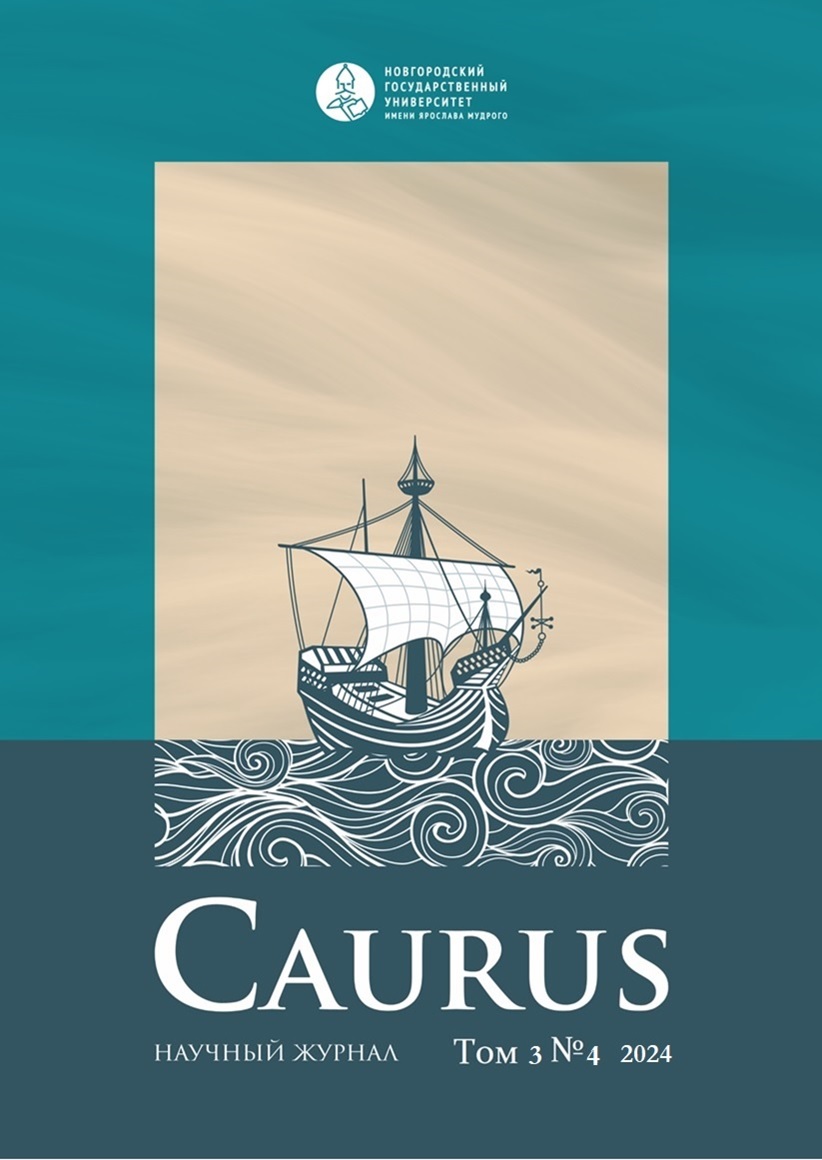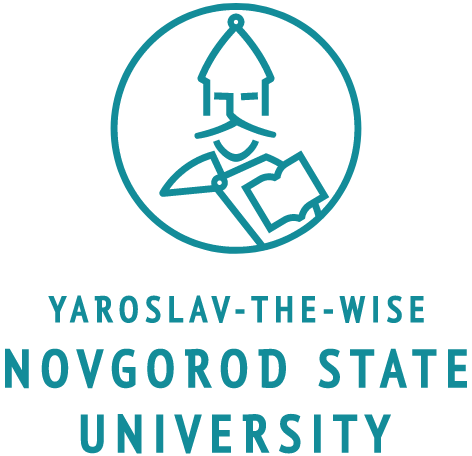Editor’s Foreword
Abstract
Dear readers!
The articles in the latest issue of the scientific journal Caurus are devoted to some aspects of the relations between Rus’/Russia and the countries of the Baltic region in the 15th–18th centuries, with special attention to the closest western neighbor of the Russian Northwest, Livonia and the Hanseatic League.
The early history of Livonia is the subject of the first article in the issue, it is not a quite typical country for medieval Europe. And the point is not that the country does not exist on modern maps and not that it emerged and acquired statehood not as a result of internal development, but in the course of external conquests, as a result of which the basis of medieval Livonian statehood was formed by economical, lawful, political-administrative and cultural elements brought in from the outside. Until the loss of its sovereignty in 1561, Livonia in fact remained a rather weak union (confederation) of medieval Crusader states with no prospect of developing into a national state with elements of an institutional structure, as was the case with most European states at the turn of the Middle Ages and the Modern Age. It's worth mentioning that the country on the eastern coast of the Baltic Sea, which began to be called Livonia in the 13th century, became kind of ‘bone of contention’ for a number of European states in the 16th century and initiated one of the largest European conflicts in the Baltic region, known as the Livonian War of 1558–1583. Meanwhile, Livonia had acted as an object of struggle for European states already at an early stage of its existence in the 13th century. This problem is the subject of the article At Origins of Old Livonia: Initial Phase of Struggle for Its Territory Development by Marina B. Bessudnova. In the article, along with a brief description of the German expansion in Livonia, the idea is developed that its colonization was a much more complex, multi-vector phenomenon and took place in the conditions of fierce competition between neighbors who claimed to develop its territories — Polochans, Lithuanians, Novgorodians, Danes and Swedes. The actions of the Danes and Germans, who ultimately laid the foundations of the Livonian statehood, turned out to be the most successful due to significant mobilization resources, support from the papacy, effective methods of economic, administrative and fortification development of the captured lands. All this increased the effectiveness of Christianization and subjugation of the local population and ultimately allowed them to gain the upper hand over Polotsk, Lithuania and Novgorod with their soft colonization aimed at forming tributary relations with the people of Livonia.
The Hanseatic theme is explored in the article Impact of Hanseatic and Livonian Trade Bans on Trade Activity on Narva Border in 15th Century by Oleg Yu. Lashmanov and Valentina A. Yakunina. The defining features of the study are the importance of the role of Narva trade in the context of escalation of tension in Russian-Livonian relations and the development of unusual trade, which represented an alternative to the Hanseatic model of commodity exchange. The identification of the specifics of Russian trade on the Narva border, in particular, its dependence on the Hanseatic and Livonian trade bans, cannot be considered complete due to the small number and fragmentariness of written sources concerning informal trade exchange, however, the researcher can be assisted by a descriptive method aimed at constructing hybrid graphs of quantitative indicators of trade transactions in Narva in the 15th century, accompanied by a linear trend demonstrating the influence of contemporary trade bans, as well as peace agreements aimed at normalizing the trade. The method presented in the article allows us to note the low dependence of Narva on the Hanseatic sanctions, the neutralization of which was facilitated by the non-Hanseatic status of the city and the development of the unusual trade, but, on the other hand, the high efficiency of trade bans by the Livonian Order leadership can also be noted. Of particular importance for the activation of Narva's unusual trade was the duration of trade bans, which forced merchants to maintain a stable turnover and trading locations which were encroached upon by foreign competitors.
Continuing the theme of the Russian-Livonian unusual trade of the late Middle Ages, Maxim Yu. Kolpakov presents the article Types of Land and Water Transport of Unusual Trade Participants in Russian-Livonian borderland of 15th–16th Centuries. The issue of transport routes and means of transportation in trade relations between Russia and Livonia is an important and insufficiently studied topic. The author describes both land roads and water routes that connected the most important trade centers of the region including Pskov, Novgorod, Reval, Dorpat and Narva. This allows us to reconstruct the logistics of that time and deepen our understanding of the processes that took place on the Russian-Livonian border in the early modern era. The article pays attention not only to the main transport routes, but also to specific types of transport, such as carts, rowboats, baidaks, barges and other types of ships used in trade. The importance of such professions as boatmen, and carriers is noted, which had a significant impact on the development of trade routes. This expands our understanding of the social structure of that time and the interaction of different social strata within the unusual trade.
An addition to the articles on medieval Baltic history is the article by Mikhail M. Safonov on the relationship between the major general of the Holstein service, the chief chamberlain of the heir to the Russian throne Peter Fyodorovich Christian August Brockdorf with the Grand Duchess Ekaterina Alekseevna, relatively soon Empress Catherine II. Although this article does not seem to fit in with the objectives of the issue in thematic and chronological terms, the editors of the journal considered it possible to publish the paper due to the want to diversify the thematic range, as well as to bring to the attention of our readers the very original observations of the author. According to them, Ekaterina Alekseyevna, whom her husband secretly entrusted with the management of the affairs of his ancestral duchy, met a man in Brockdorf who opposed her ambitions and desire to strengthen her personal power. The stumbling block in their relations was the question of exchanging Holstein for the duchies of Oldenburg and Delmenhorst. During the illness of Empress Elizabeth Petrovna, Ekaterina conducted secret negotiations with Denmark about the exchange and received money from Danish diplomats, which she used to expand her popularity in Russian society. Thus, long before the palace coup she inspired, the Grand Duchess sought to reduce her husband's resources of power by depriving him of his own territories and sovereign military forces. In her quest for sole power, she was opposed by Peter's favorite Brockdorf, and their conflict largely provoked troubles in the family of the heir to the Russian throne, which had fatal consequences for Peter Fedorovich, who became Emperor Peter III.
The last article, authored by Elizaveta M. Kulagina, is a review of the reports of the 3rd All-Russian Scientific and Practical School Medieval Rus in World History, which took place in May 2024 at the History Department of P. G. Demidov Yaroslavl State University within the topic of Old Russian Language and Numismatics. Students from a number of Russian universities took part in it; specialists from well-known scientific institutions, including academic structures, conducted lectures and practical classes for the school participants. The topics of lectures on numismatics and Old Russian literature, which were read by invited experts, are interesting. Of particular importance are practical classes, during which students had the opportunity to become familiar with the history of specific numismatic collections in Russian museums and acquire some skills in working with this kind of historical sources. The study of Old Russian by students of Russian universities should stimulate their participation in research work and make it truly scientific.
M. B. Bessudnova







